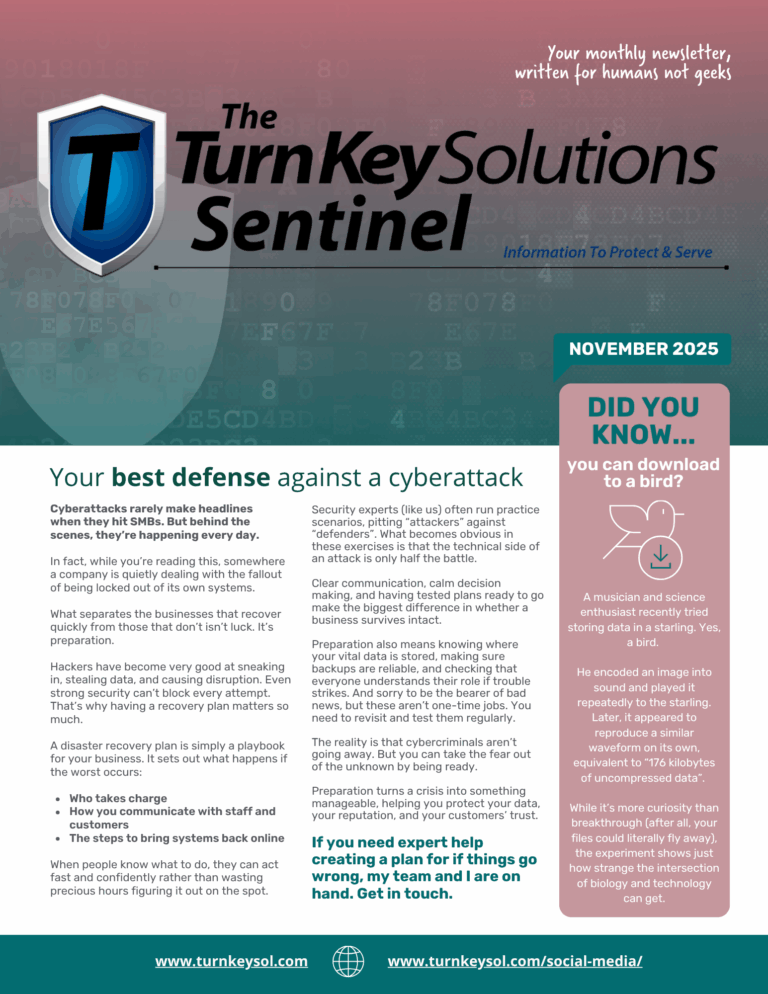
 As cyber threats evolve rapidly, the human role in cybersecurity is more vital than ever. According to the IBM Cost of a Data Breach Report 2024, the average breach cost has increased to $4.88 million. Between 68% and 90% of these breaches involve human error, such as falling victim to phishing scams or mishandling sensitive information.
As cyber threats evolve rapidly, the human role in cybersecurity is more vital than ever. According to the IBM Cost of a Data Breach Report 2024, the average breach cost has increased to $4.88 million. Between 68% and 90% of these breaches involve human error, such as falling victim to phishing scams or mishandling sensitive information.
For medium-sized businesses, a single misstep could jeopardize business continuity, client trust, and regulatory compliance. The solution? A well-structured employee cybersecurity awareness training program that empowers your team to become your first line of defense.
Why Employee Cybersecurity Awareness Training Matters
Many security breaches are not caused by advanced hackers but by employees who unknowingly open the door. Security awareness training isn’t about assigning blame; it’s about equipping staff with the knowledge and confidence to make safe choices, both at work and at home.
Shifting from a “check-the-box” compliance approach to engaging, relevant education helps employees understand the why behind security protocols. When employees see how good cyber hygiene protects both the company and their personal lives, they’re more likely to adopt secure habits.
Key Benefits of a Strong Cybersecurity Awareness Training Program
An effective cybersecurity training program provides more than just protection; it delivers measurable business outcomes:
- Reduced incidents: Fewer phishing clicks and accidental breaches.
- Faster response times: Trained teams report and respond to incidents quicker.
- Lower breach costs: Breaches involving human factors often take longer to detect, costing over $1.39 million more on average.
- Stronger culture of security: Training creates a workforce that’s engaged in protecting business assets.
- Improved compliance: Helps meet industry standards and insurance requirements.
Elements of a High-Impact Cybersecurity Training Program
To see real results, your security awareness training should be strategic, ongoing, and tailored to your workforce. Key components include:
- Customized Role-Based Content
Different departments face different risks. Tailoring training for finance, operations, and frontline staff ensures content is both relevant and engaging.
- Consistent Reinforcement
Move beyond annual training sessions. Monthly micro-learning and real-world phishing simulations keep security top of mind.
- Phishing Simulation Platforms
Simulate real-world threats to test email security awareness. Track results and reinforce lessons in real time.
- Behavioral Analytics
Use learning analytics and dashboards to identify risk-prone users and adjust training accordingly.
- Regional Relevance
Content that resonates with the Gulf South’s unique business environment, from regulatory requirements to regional threats, improves adoption and understanding.
Get Help Improving Your Cyber Awareness Training Program Today
Building a Cybersecurity Training Lifecycle
Creating a sustainable program starts with a clear strategy:
Assess Your Current State
- Analyze past security incidents
- Gather feedback from employees
- Review compliance gaps
Design a Structured Program
- Segment learners and automate role-based training
- Focus on relevant threats like phishing and credential theft
- Develop monthly reinforcement schedules
Deploy with Clear Communication
- Gain leadership buy-in
- Involve departmental champions
- Highlight personal benefits for employees
Measure, Adapt, Improve
Track key metrics:
- Training completion rates
- Phishing click-through rates
- Incident response times
- Employee-reported threats
Use these insights to refine and strengthen your program over time.
Integrating Human Risk Management
The next evolution in cybersecurity awareness is human risk management, a proactive, data-driven approach that integrates real-time security behavior into your training strategy.
When an employee triggers a security alert (e.g., clicking on a malicious link), modern platforms can instantly deliver contextual micro-training. This “just-in-time” model reinforces learning in the moment and builds long-term behavior change.
Benefits of human risk management tools:
- Real-time alerts via Slack, Teams, or email
- Targeted training based on actual risk behavior
- Reduced volume of low-priority alerts
- Integration with existing Security Operations Center (SOC) tools
Implementing Security Awareness Without Overwhelm
Not every business has the internal resources to build a full program from scratch. If your business doesn’t have a dedicated IT partner, consider outsourcing to a managed cybersecurity provider. A reliable vendor can deliver:
- Pre-built, customizable campaigns
- Compliance-ready content
- Expert support and program management
- Advanced phishing simulations
- Behavior-based training integrations
Measuring ROI: Proving the Value of Training
You can’t manage what you don’t measure. Establish baseline metrics and monitor progress regularly. Critical indicators include:
- Training engagement and participation
- Timeliness of onboarding new hires
- Phishing test performance
- Incident reporting trends
- Compliance audit readiness
Correlate improvements with risk reduction and share results with stakeholders. Demonstrating ROI helps secure continued buy-in and long-term program support.
Shaping a Cyber-Aware Business Culture
Leadership commitment is essential to success. Business leaders must model good cybersecurity habits and support department heads in reinforcing secure behaviors. Build a culture where every employee, from HR to operations, understands they play a role in defending the business.
Key focus areas moving forward:
- Keep content fresh and relevant to today’s threats
- Use automation and analytics to personalize learning
- Strengthen collaboration between IT, leadership, and end users
- Celebrate program milestones and share success stories
You can’t manage what you don’t measure. Establish baseline metrics and monitor progress regularly.
A Stronger Future Starts with Your People
The most sophisticated firewalls and antivirus tools won’t protect your business if your people aren’t equipped to recognize and avoid threats. Cybersecurity awareness training is a smart investment in your people and your future.
Start where you are. Focus on progress. Partner with experts like Turn Key Solutions. Every step you take toward building a security-aware workforce helps reduce risk, increase resilience, and protect your business.
Need help building your training program? Turn Key Solutions provides managed IT and cybersecurity awareness training for medium-sized businesses throughout the Gulf South. Contact us today to learn how we can help your team stay secure.









